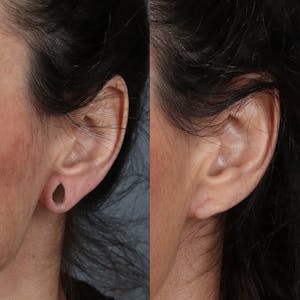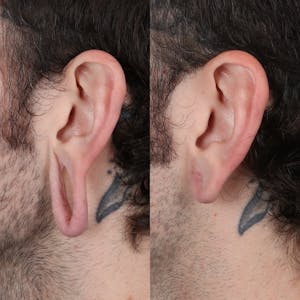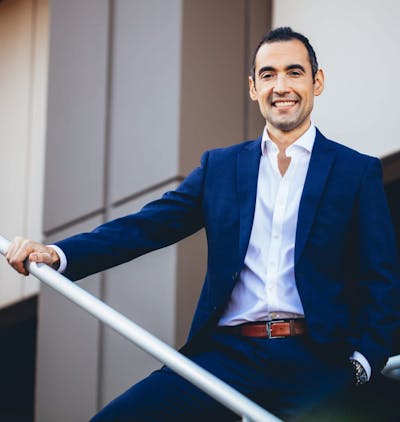Earlobe repair can be performed to address torn lobes, gauge earring mishaps, stretched-out lobes, splits, and elongation. These contour irregularities can cause anxiety during job interviews and make it difficult to enjoy a wide range of hairstyles. The surgery is minor, but it can make a huge difference in terms of self-confidence and quality of life. Dr. Vila delivers natural results that are customized and elegant.
Earlobe repair is a simple, straightforward procedure performed in the privacy of Dr. Vila’s office. It can restore the appearance of the lobes after damage or injury. Even with long hair, many clients are unable to hide distortions in their earlobes and are seeking a solution that will restore their appearance.
Because the earlobes are made of easily stretched-out tissue, heavy jewelry and gauged earrings can damage the pierced hole and lead to elongation. Earlobe repair can restore normalcy to the lobes, correcting tears, splits, or misshapen contours.





